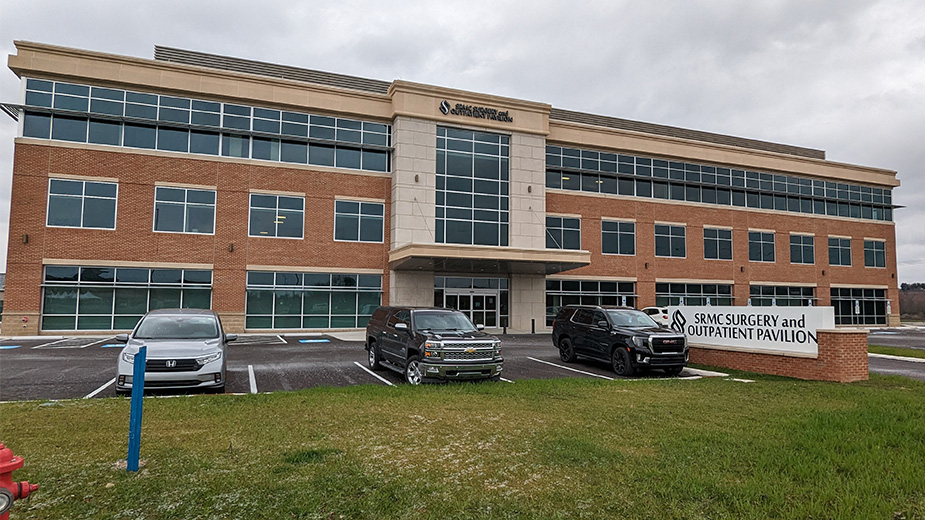Personal Care Homes Offer Lower Cost Option in Pa.
HERMITAGE, Pa. — Finding the ideal senior living community for oneself or a loved one can be confusing, especially when it comes to personal-care homes versus assisted living – a distinction that the commonwealth of Pennsylvania recognizes and regulates.
In general, a personal-care residence provides housing and meals, along with assistance with medications and other daily needs, such as dressing, bathing, laundry and housekeeping.
By comparison, an assisted living residence provides those same services, but also includes some skilled health-care services to supplement personal care.
Personal-care homes are inspected and licensed by the Pennsylvania Department of Human Services. They are usually privately owned, although some are operated by local governments or nonprofit agencies. Personal care homes are permitted to house as few as four people to as many as several hundred.
Regulations cover fire safety, staff training and education, nutrition and meal preparation, resident health and medical care, personal-care service delivery, site conditions, and other factors affecting the health, safety and well-being of residents.
The terms of personal care and assisted living were interchangeable in Pennsylvania until 2011, when the commonwealth began issuing separate licenses to distinguish them. By definition, they differ somewhat in their levels of care and it’s important for consumers to know what they are receiving.
“Do your homework,” advises Chris Wright, president and CEO of St. Paul’s Senior Living Community in Greenville and Hermitage, Pa.
The Pennsylvania Office of Long-Term Living distinguishes between assisted living residences and personal-care homes in three ways: concept, construction and level of care, Wright explains.
At the concept level, assisted living allows residents to age in place, meaning that even as their needs for health care increase, they will not have to relocate to another site to receive that care.
Personal care, on the other hand, provides a home for a resident who does not require the services of a long-term facility.
The two are also distinguished by their physical qualities.
Assisted living residences must provide residents a private room with a lockable door, a private bathroom and a small kitchen. Personal-care homes are not required to offer these amenities and can have up to four residents sharing a space.
Finally, assisted living residences must ensure that residents receive skilled-nursing care if their needs surpass standard assisted living services.
“There is nothing that says we can’t provide more services in personal care,” Wright says. “For instance, even though a nurse is not required in personal care, we have many nurses at that level.”
The most common assisted living services include medication management and help with using the bathroom, dressing and grooming. Housekeeping, meals, laundry and transportation services, as well as social programs and activities, are also included. Trained staff is on hand 24/7 to help with safety, care and support. Many personal-care homes offer these same services.
As of April 30, there were 1,146 personal-care homes in Pennsylvania with a licensed capacity to accept 64,203 residents, according to the Pennsylvania Department of Human Services. Of those, 777 are operating as for-profit homes with 369 as nonprofit.
The National Center for Assisted Living reports 1,000 assisted living providers in Pennsylvania with a licensed maximum capacity of 62,900.
Some Pennsylvania senior-living communities operate in more than one location, giving them the ability to offer both personal-care and assisted living services.
St. Paul’s has numerous levels of continuing care, including home-based care through St. Paul’s Without Walls, independent living at The Colony, personal care at The Heritage and The Ridgewood, memory care at Jones Serenity Lane and Jones Serenity Circle and short-term stay and skilled nursing care at The Villas.
The Nugent Group, based in Hermitage, Pa., has five sites, either for assisted living or personal care. These include Continuing Care Retirement Community, Clepper Manor and The Lakes at Jefferson Personal Care and Independent Living, as well as NuChoice Health Partners, a home-health service.
The Nugent Group also provides memory-care services and operates Lakeview Personal Care Community in Darlington, Pa., and Shelbourne Personal Care Community in Butler, Pa. Nugent CEO John Nugent started The Nugent Group in 1958. His grandson, Shane Nugent, now serves as vice president.
Many Pennsylvania retirement communities, including St. Paul’s, have personal-care apartments that provide most assisted living services but have decided not to pursue assisted living status.
This is because assisted living licensure can drive up administrative and staffing costs without increasing quality of care, Wright says.
In addition, Medicaid does not cover these higher costs with additional reimbursement.
The Nugent Group offers both types of care. Paige Nealer, director of marketing and advertising, urges people to become educated about all their options to find the appropriate level of care for the money they will be spending.
Among seniors’ greatest fears as they age is losing their independence, both Wright and Nealer agree. While seniors wish to remain in their own home as long as possible, the reality is that almost half of U.S. adults age 65 and older either receive or need help with daily living tasks.
At St. Paul’s, personal care can include many options found in assisted living. This is where the homework comes in, Wright reiterates. “Do your research,” he says.
Wright explains that there are many alternatives to personal care, including the in-home services.
“In-home services, as needs increase, can actually cost someone more money than going to live in personal care,” he says. “A rule of thumb would be if you are spending 20 hours a week with in-home services, you should evaluate whether personal care is a better fiscal option.”
There is not a one-size-fits-all answer about the cost of either personal care compared to assisted living, Nealer says.
So many factors, including residence size and services required, play a part in what an individual will pay.
The 2017 Genworth Cost of Care Survey estimates that the national median monthly rate for assisted living is $3,750, or $123 per day.
Neither Medicare nor Medicaid typically cover the costs of personal care or assisted living. Most residents pay for this care from their personal resources or, if they planned ahead, with help from long-term care insurance, which can be limited.
It is advised to check with each service provider to verify its expectations as well as the insurance company to fully understand what each plan covers.
Wright suggests consumers also consider whether the personal care home or assisted living facility is nonprofit or for profit. Nonprofit homes don’t answer to shareholders, allowing them to provide more staff and services while turning profits back into the home, he says.
As for the homework, “It is never too early to start educating yourself,” Wright says. “Don’t wait until the need arises.”
For most people, “The goal is to live forever in your home, but that simply may not be the reality; so, make the reality your goal.”
Copyright 2024 The Business Journal, Youngstown, Ohio.


